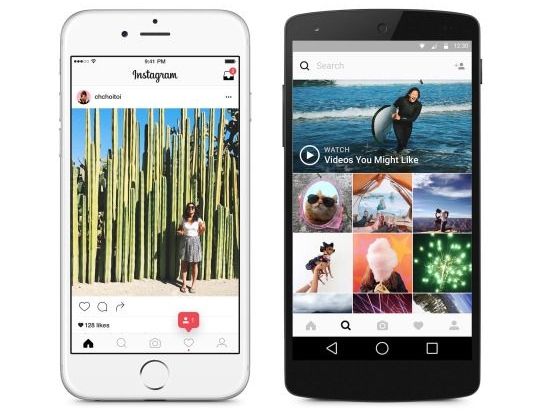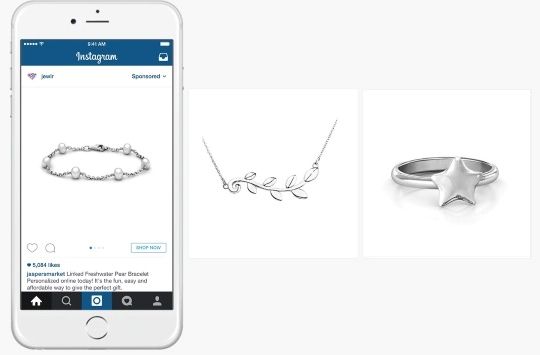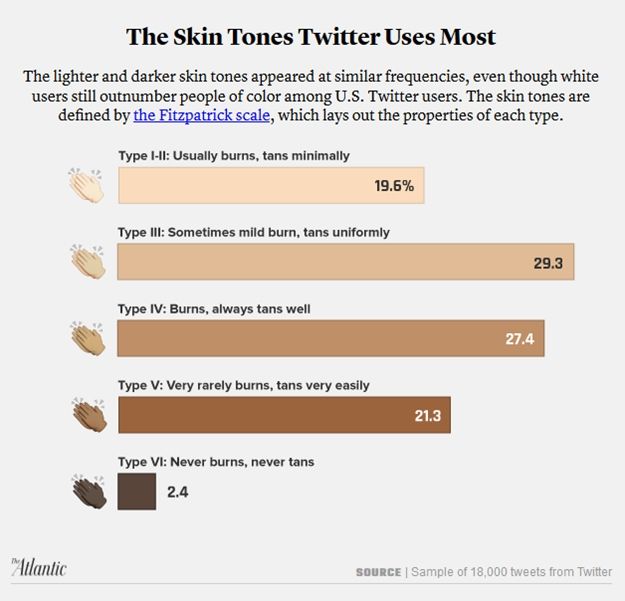Product launches and redesigns were the talk of the town this week. Amazon surprised us all and introduced a user-generated video service to take on YouTube, and Instagram launched a redesigned app and icon.
This week's 'Skim will also fill you in on Facebook's promise to make Messenger bots more useful with analytics, give you the latest on LinkedIn's plans to rival Facebook's Instant Articles, and tell you all about the first feature-length film that debuted on Snapchat.
Skim to stay in the know!
Amazon launches platform for user-generated videos
Taking on YouTube and Vimeo is a tall order, but if anyone is ambitious enough, it's Amazon. Amazon Video Direct came via a surprise announcement on Wednesday, and the service officially launches the company into the user-generated video market.
AVD, as they call it, lets users upload content to Amazon's Prime Video and earn royalties based on the number of hours streamed, and to monetize it with advertisements or by making the content available to rent or own. The launch of the service follows the introduction of standalone Prime Video subscriptions, which start at $8.99 per month.
Publishers already signed up include Mashable and Conde Nast Entertainment, making us think the tool is aimed more at professionals than your mainstream YouTube user, but the service opens the door to creators from all walks of life.
1. Facebook bets on bots despite criticism, says analytics are coming soon
Facebook generated a lot of chatter and promised the future of customer service and automation with its new Messenger chatbots, but brands have been hesitant to latch on, and the social network has been criticized for jumping onto the bot train before it was ready.
Messenger's head of product took to the stage at a recent TechCrunch event to dispel fears that bots would dehumanize Messenger, and to reassure brands that a full-fledged analytics system was on its way.
Aside from a few success stories like Activision's Call of Duty bot (more than six million messages exchanged between users in its first week), there are few indicators showing how bots are performing overall. An analytics platform that does would help brands see which messages or calls to action are working and garnering engagement, and which are coming off as spammy.
Check out the full panel in the video:
Facebook Messenger bets on bots (full panel) #TCDisrupt https://t.co/CsueutuCbQ
— TechCrunch (@TechCrunch) May 10, 2016
2. Instagram launches redesigned app and icon
Big changes over at Instagram as the photo and video sharing network has finally done away with its classic old-school camera app icon in favor of a more modern, rainbow-inspired look.
In contrast to the icon's pop of color, the app itself received a barebones black-and-white redesign, built to put "more focus on your photos and videos." What do you think of the changes? Let us know in the comments below!

3. Facebook denies allegations of anti-conservative bias
A report from Gizmodo shed light on former Facebook employees' claims that the team in charge of Trending Topics on the social network routinely suppressed news stories of interest to conservative users.
The Facebook news curators also said they were instructed to artificially inject stories into the topics even if online buzz didn't warrant it. Facebook denied any wrongdoing, saying there's no evidence to support such claims.
The controversy serves as a reminder that, in the end, all isn't left up to the algorithms.
4. Periscope to introduce new live search function, ability to save streams permanently
The livestreaming app has launched a beta for users to test a new functionality that enables them to save their streams permanently, a feature often requested in the past. To try it out for yourselves, simply add "#save" to the title of your stream before going live. Once the feature is permanently implemented, the hashtag addition won't be necessary.
The Twitter-owned app also says it will also roll out a live-video search function that lets users find broadcasts by topic or title. The new capabilities will help the platform build an archive of video, likely pushing the platform toward the path of paid advertising. We see what you did there, Periscope!
Working on supporting broadcasts beyond 24h! Starting now, you can use our public beta by using #save in your title! https://t.co/LsjqsSib7v
— Periscope TV (@periscopetv) May 5, 2016
5. It turns out Facebook Live doesn't have to be live at all, and publishers are catching on
Facebook Live guidelines leave the door open to non-live video, and the fact that the social network's algorithm now prioritizes live content has encouraged some brands to test whether "broadcasting" their pre-recorded content via Live increases their exposure in users' feeds compared with the platform's traditional video uploader.
Facebook acknowledged the workaround, but urged publishers to live-stream, stating that the strength of Facebook Live lies in its ability to help on-air hosts engage and interact with viewers in real time.
6. Snapchat: Primed for feature-length films?
Indigenous Media last week released social media star-studded Sickhouse, the first feature-length film on Snapchat. The horror film was specifically shot for the platform in real time over the course of five days, and it follows a group of social media crazed teens into the woods where, obviously, terror ensues.
The film was reportedly viewed by millions, and the studio plans to release a full-length version via more traditional channel, Vimeo, on June 1.
Although major studios are still garnering success using traditional methods of producing, marketing, and distributing film, we can certainly chalk this one up to another thing for the Hollywood crowd to worry about.
SICKHOUSE -- The Made for Mobile Movie from Indigenous Media on Vimeo.
7. Facebook updates dynamic ads, brings them to Instagram
Facebook's dynamic ads, which show consumers products that they've shown interest in, are now on Instagram, meaning it just got a lot easier for marketers to get their products in front of Instagrammers' eyes with dynamic creative and targeting. Previously, advertisers had to tailor creatives and targeting to each product in their catalog.

8. LinkedIn plans to rival Facebook's Instant Articles
Looking to strengthen its offering and reputation as the go-to source for business news, the B2B-centric social network is reportedly in talks with major media outlets to create new publishing features that would dramatically increase pageload times—like Facebook's Instant Articles.
9. Facebook tests new reaction, Messenger feature for Mother's Day
The social network marked Mother's Day this year by giving users the ability to add flower-wrapped messages on Messenger. Although (ironically) it wasn't available in the US for American Mother's Day weekend, the company also branched out beyond its five default reactions for the first time, rolling out a new thankful flower reaction in select markets.
The new features give us a hint of future possibilities of new reactions around other regional holidays and trends, which could be used by brands that embrace Messenger's new bot capabilities to interact with consumers. Stay tuned!
10. WhatsApp reportedly gearing up to add video calling feature
Recent translation requests spotted by Android Police suggest that WhatsApp is set to bring a video-calling feature to users soon. The Facebook-owned messaging platform is also rumored to be working on various new additions that include voicemail, a call-back feature, and zip file sharing support. No official rollout dates for these features, but we'll certainly make sure you're the first to know!
11. How to use Facebook Messenger for business
If your brand's customers are on Messenger, there's a good chance the platform's latest business-friendly updates could prove useful for connecting and engaging with your consumers. So, take a look through this week's super hero guide to using Messenger for business!
Covered in detail: using and sharing Messenger codes, promoting private message links, and replying with automated messages.
12. Introducing musical.ly, the music video social network grabbing investors' attention
The company calls musical.ly a video social network, and the app with 60 million users is on its way to a $500 million valuation. At its most basic, it's a lip-sync app like Dubsmash with which users can make music videos, but investors are impressed with the app's ability to turn such a tool into a social network that has made people comfortable with expressing themselves in a new way.
Users can like, comment, explore trends, follow accounts to keep up with their favorite performers, and produce content themselves to be shared with the community. The company is reportedly working on some updates to attract an older crowd, but details have yet to emerge.
13. We've got the keys to highly-engaging Facebook video ads
Catching and maintaining the attention of your consumers on a busy Facebook News Feed isn't an easy feat, but a recent study from the social network reveals some best-practices and recommendations to do just that.
From making your videos understandable without sound to communicating a link to your brand clearly and quickly, check out this recent piece to discover the key elements to a successful Facebook video ad.

14. We'll wrap with why white people don't use white emoji
After new, multi-race emoji were introduced in 2015, the world mostly figured it was common sense to include imagery that represents the various races of our communities.
However, a recent analysis by The Atlantic's Andrew McGill of 18,000 tweets finds that white people are weirdly hesitant to use light-skinned emoji, and that the white emoji is used far less often in the US on Twitter (19% of the time) than darker counterparts (52%).
Pundits cite hesitance to use white emoji as an example of "white-people weirdness," but some say using the affirmatively white emoji feels disturbingly close to displaying "white pride" and intolerance. Have these thoughts crossed your mind mid-text or mid-tweet?





